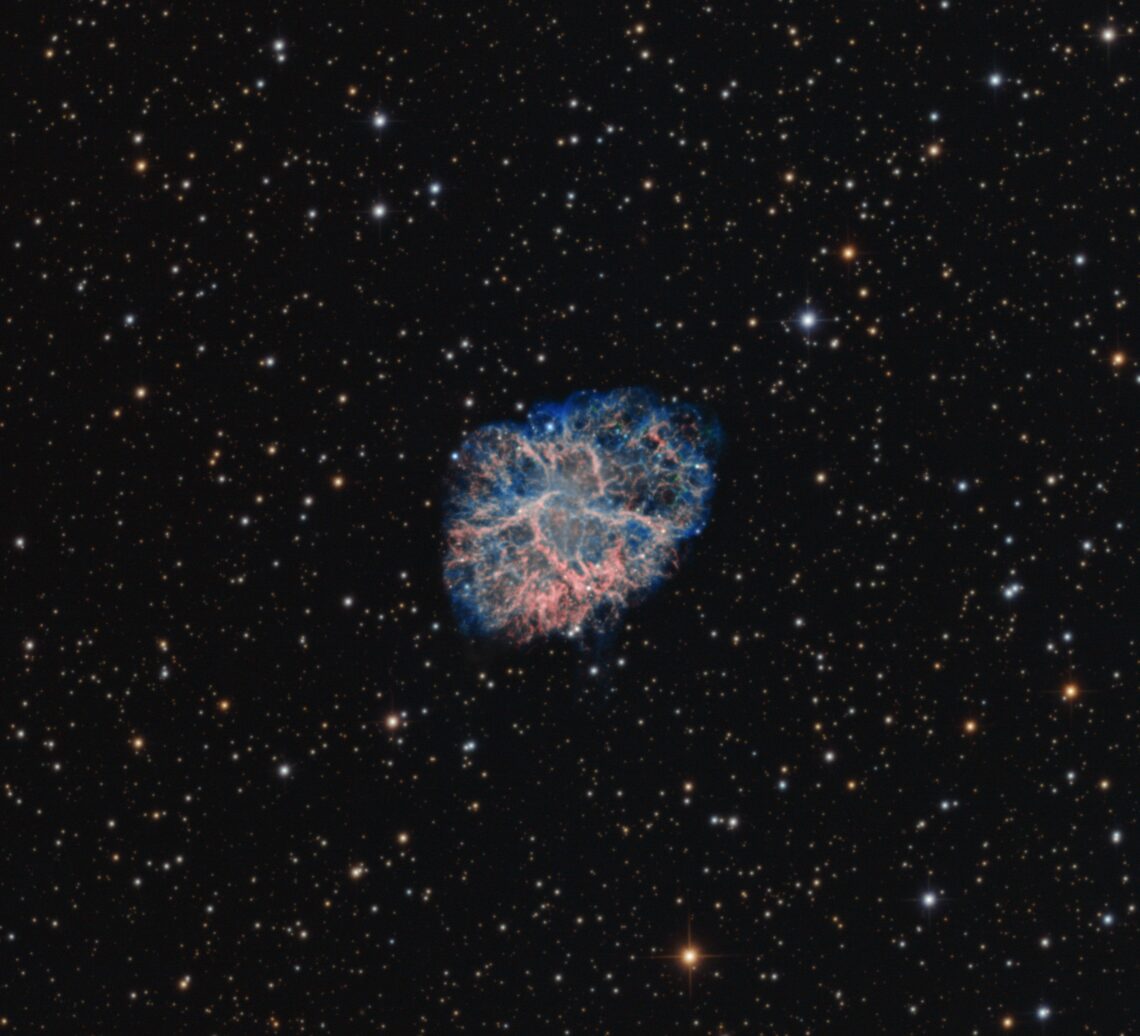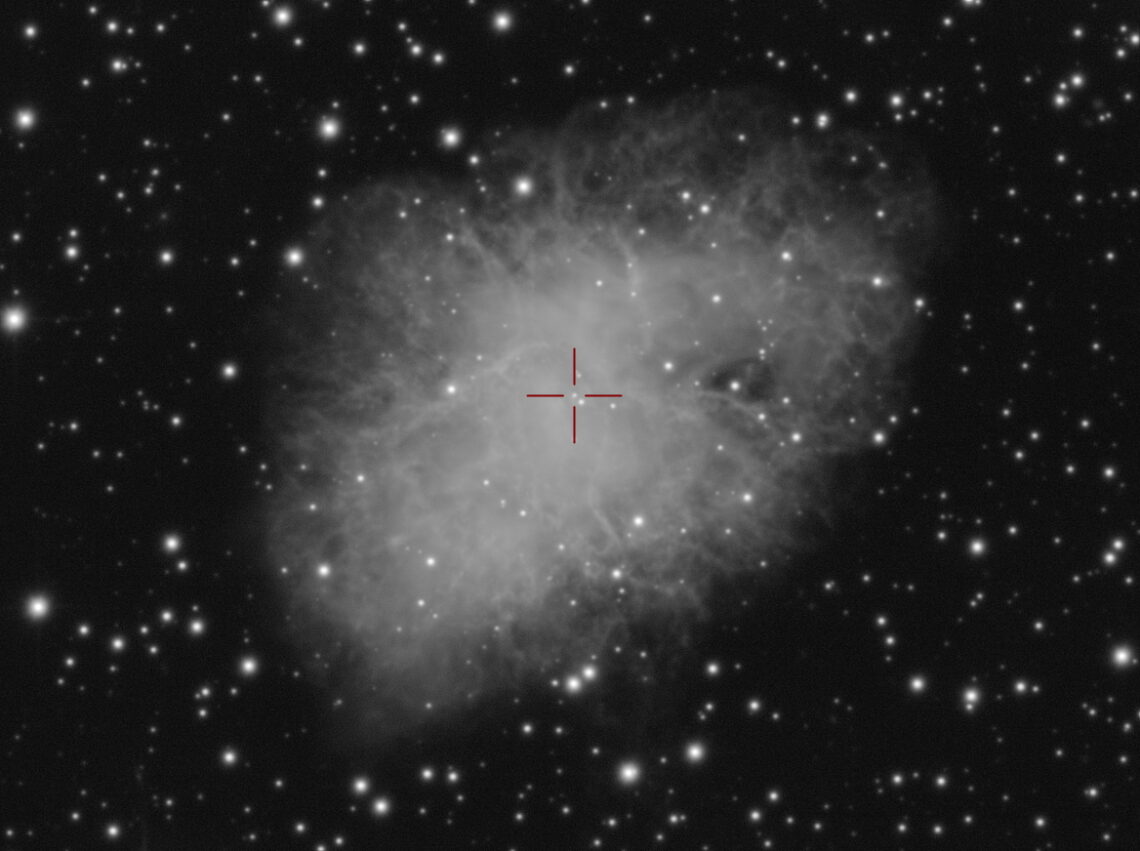The most famous supernova remnant and number 1 in the Messier catalog – this is the Crab Nebula, M1. Its origin is the supernova, now cataloged as SN1054, which was observed in Juli 1054 by Chinese and other astronomers. The supernova was brighter than Venus and visible on the day-time sky. Up until today the cloud of gas ejected in the supernova explosion keeps expanding and now forms an emission nebula with a diameter of about 10 lightyears. Given its distance of about 6500 lightyears, the apparent size on the sky is about 1/4th of the full moon.
The first image is a classical RGB broadband image with a total of 11 hours of exposure time with the Planewave CDK17. In this case no luminance filter was used, just the three color filters with equal exposure time for each of them. The colors should resemble the natural appearance of the nebula, although color saturation has been enhanced.

The second image is a false-color narrowband image composed of Hα, OIII and SII exposures with a total exposure time of 15 hours. The stars have been removed from the narrowband image and replaced by RGB stars for a more natural look. At first sight, the nebula looks really different from the RGB version… more skeletal and filamentary.

Going back to the broadband data, below is a raw grayscale image zoomed-in to take a closer look at the stars. One of them is special and it is marked in the image below. This dim object is the compact remnant of the supernova explosion, a neutron star… the famous Crab Pulsar PSR B0531+21. This one of very few pulsars, where the optical counterpart is known and has been seen pulsating also in visible light! It is small and massive, just about 20 km in diameter but containing 1.4 solar masses of highly compressed neutron matter. And it is spinning fast, with a period of just 33.5 milliseconds. A truly extreme object captured with the TURMX telescopes!

| Telescope | Planewave CDK17, D=430mm, f=2940 mm |
| Camera | QHY600M Full Frame CMOS, 9-Slot Filter Wheel with Baader Filters |
| Exposures | 11 hours, RGB 110+110+110 x 120sec, BIN 2×2 15 hours, HOS 80+100+100 x 180sec, BIN 2×2 |
| Data taken | 7 January – 6 February 2022 |
| Site | TURMX @ E-EyE Observatory, Extremadura |
| Processing | Robert Roth, 15 February 2021 |
